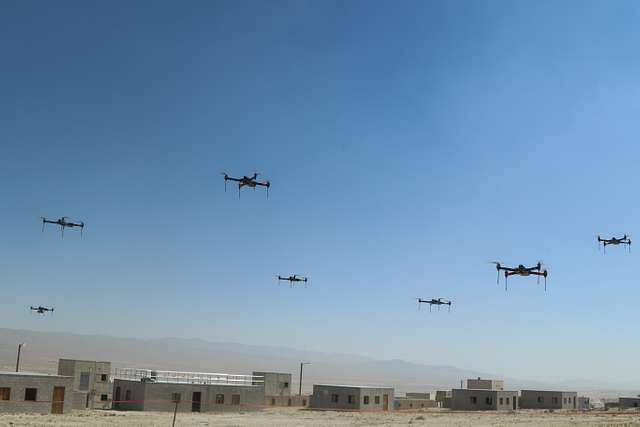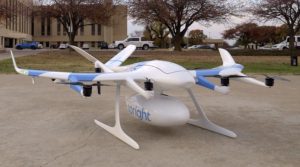Three Key Insights from the FAA’s ASSURE A50 Small UAS Traffic Analysis Study: What Every Drone User Should Know
The FAA’s ASSURE A50 “Small UAS Traffic Analysis” study, led by Embry-Riddle Aeronautical University in collaboration with institutions such as Kansas State and Wichita State along with private sector experts, represents a comprehensive analysis of real-world drone activity in the United States. Utilizing state-of-the-art Remote ID detection technology, researchers gathered over 4.6 million data points from upwards of 6,000 drone flights, uncovering crucial insights impacting pilots, regulators, and all stakeholders in airspace safety.
Here, we distill the three most significant findings from this pivotal research and their implications for the drone sector’s future in America.
1. Remote ID Technology Shows Potential but Faces Real-World Challenges
Wondering if you can track nearby drones on your smartphone, or if authorities can? Remote ID is the innovation striving to achieve this. The technology allows drones to broadcast their digital ID for greater operational transparency.
The study highlights:
- Remote ID signals are effectively detected within a mile, rarely beyond ten miles. This results in a limited visibility range for each sensor, smaller than what many might anticipate.
- Adoption is slow: Only a bit more than half of registered commercial drones, and roughly a third of recreational drones, transmitted Remote ID during the data gathering. Thus, our digital map of drone traffic is currently riddled with voids.
Relevance: For law enforcement and air traffic managers relying on Remote ID to track and manage drones, the lack of widespread broadcast coverage and pilot compliance presents significant hurdles. Until broader adoption and possible signal enhancement occur, Remote ID should be considered just one of many tools for ensuring airspace safety.
“Remote ID sensors reliably picked up drone broadcasts inside one mile, and almost never beyond ten…barely half of registered commercial drones and about one-third of recreational aircraft were actually broadcasting Remote ID during the collection period.”
2. Drone Operations Occasionally Violate Airspace Rules, Especially Near Sensitive Areas
A major concern with integrating drones is the potential for “airspace incursions” where drones appear in restricted zones like near airports.
New data brings to light some troubling patterns:
- Approximately 10% of drone flight time occurred in airspace meant for manned aircraft—above 400 feet. This exceeds standard Part 107 rules, implying non-compliance or specific operation waivers. Most infractions seem to be by recreational users rather than commercial ones.
- Proximity to heliports is concerning: Drones were detected operating within half a nautical mile of heliports—areas often not marked on aeronautical charts, leaving many pilots unknowingly exposed to risk.
Implication: These patterns increase collision risk. The study recommends immediate, practical measures, such as updating aeronautical charts to include heliport locations, enhancing situational awareness for drone and manned pilots.
“Drones flew in airspace typically used by manned aircraft about 10 percent of the total cumulative flying time… Small UAS were detected operating closest to heliports at distances within 0.5 nautical miles, about 3,000 feet.”
3. The U.S. Drone Fleet Exhibits Dynamic Usage, Compliance, and Retention Trends
The FAA databases do not accurately reflect active drone usage, which is notably affected by factors like season and the rapid turnover of new pilots and drones.
- Most drone flights adhere to 14 CFR §107 regulations, especially near airports, indicating rule effectiveness when pilots are informed.
- High “drone churn”: Many small UAS are quickly retired or abandoned, altering the active user landscape regularly.
- Discrepancies in registration versus actual flight: There’s a stark contrast between registered drones and those actively broadcasting Remote ID or following regulations.
Why it matters: The constant influx of inexperienced users due to high turnover rates could foster cycles of noncompliance and recurring safety incidents unless education and enforcement measures advance accordingly.
“sUAS retirement/abandonment rates seem to be high, especially after the first 3-4 months of use. Lastly, in general, the initial findings indicate that most sUAS operations conduct their flights in compliance with 14 CFR §107 regulations.”
Implications for Stakeholders: Pilots, Industry, and Policymakers
- For Pilots: Familiarize yourself with altitude and location guidelines. Remote ID requirements are expected to become stringent, and awareness around heliports is crucial.
- For Industry: Innovate on Remote ID technologies, focusing on enhancing their range, reliability, and affordability while buoying pilot education.
- For Policymakers: Update aeronautical resources to include heliports, simplify regulations for non-commercial operators, and amplify pilot education initiatives.
Overall Outlook: Steering the Evolution of U.S. Drone Airspace
This study illuminates the immense potential of drones while highlighting the risks associated with their integration into U.S. airspace. Though most pilots aim to comply with regulations, the variability in high-altitude drone operations poses challenges, and Remote ID’s effectiveness hinges on its widespread adoption.
With projections of the drone market exceeding 1.5 million recreational and nearly 800,000 commercial units, stakeholders must address compliance and technological advancements. By leveraging transparent data from studies like ASSURE A50, informed decisions can be made to ensure safe skies.
Conclusion: If you pilot, plan to pilot, or develop technology for those who do, strive to be part of the solution, working towards safer, smarter, and more inclusive airspace in America.













